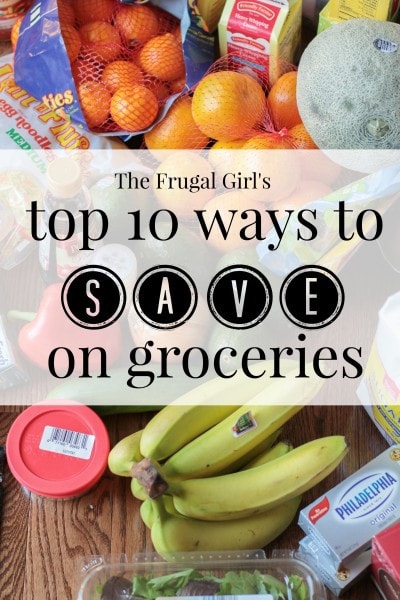
I’m pretty sure “how to save money on groceries” is one of the most-googled frugal topics, and while I’ve blogged about tactics here and there, a reader recently reminded me that I haven’t got my tips organized nicely into one handy spot.
So, I’m going to fix that today. Following are the basic ways that I keep our grocery budget under control (and luckily, none of them require coupons!)
Not all of them will be helpful to all of you, but hopefully you can pick a few nuggets of goodness out of the ideas I’m sharing.
1. Limit drink purchases.
90% of what we drink is (tap) water. It’s nigh onto free, produces no plastic trash, and is the healthiest thing you can drink.
We also drink tea, which we brew from bags. This is so, so much cheaper than buying bottled tea or bottle tea concentrate.

The only splurge-y beverages we buy are the little Starbucks frappucinos from Costco, which Mr. FG drinks. However, these are WAY cheaper than actual Starbucks drinks and I’m not about to freak out on Mr. FG over a small coffee, especially since we buy so little in the way of drinks otherwise.
2. Don’t buy individually packaged items.
Almost everything is more expensive in individual packages (chips, yogurt, cereal, drinks, meat, crackers, oatmeal, etc.) so your budget will go much farther if you buy the large container.
If you need to package items individually, choose reusable containers (as long as the lunch-carrier is responsible enough to bring the containers home!).
3. Buy basic foods.
Canisters of oatmeal, bags of rice and potatoes, gallons of milk, bulk packs of plain meat, blocks of cheese, and quart containers of yogurt are all examples of basic, staple foods that you can make into meals.
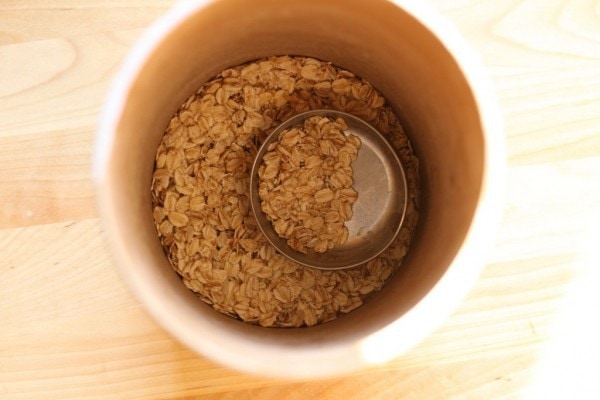
No matter where you live, a canister of oatmeal is always going to be cheaper than cereal, the quarts of yogurt will always be cheaper than the flavored packs, and the bag of rice is going to be cheaper than the boxes of seasoned rice.
4. Eat what’s cheap.
As long as you’re not compromising on nutrition, choose the least expensive option.
For example, eat oranges and bananas instead of kiwis, buy a whole ham instead of deli slices, choose a cheap beef cut and slow-roast it, buy pistachios instead of macademia nuts, and buy in-season produce (strawberries are expensive in December!).
Also, if you shop at a store that runs sales, base your menu on what’s inexpensive that week. Why eat beef when chicken is on sale?
5. DIY.
Not everyone will have the time or inclination for it (you have to decide if you have more time or more money), but DIY-ing your food can really help your grocery budget stretch.
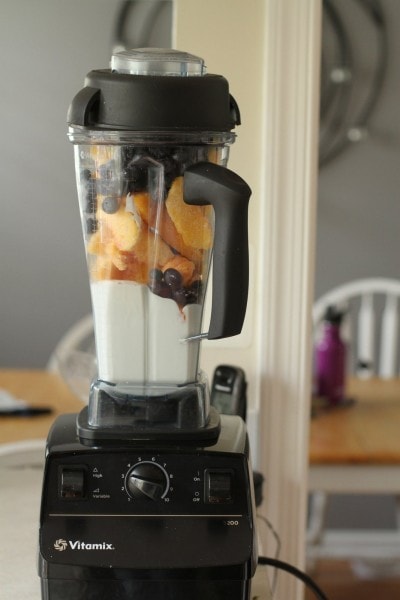
For example, we go through about 4 quarts of yogurt per week. That would cost me $12 if I bought quarts of store-brand yogurt, but I can make 4 quarts of plain yogurt for the cost of a gallon of milk ($2.50-$3.00 at Aldi).
That alone saves me $450/year and the savings are even greater when compared to individual cups of yogurt.
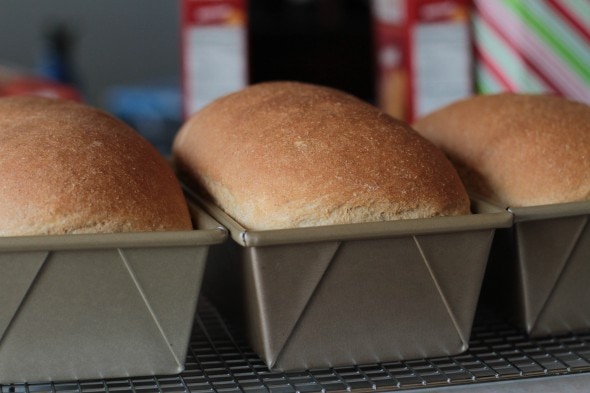
Baking my own bread also helps, especially when I bake things like hamburger buns or cinnamon bread.
Homemade granola costs a fraction of the store-bought price (what IS it with the price of boxed granola??), homemade bowls of oatmeal cost way less than the packets, homemade smoothies are cheaper than the bagged frozen kind that you throw into the blender, homemade spiced nuts cost less than the small cans of flavored nuts, and on and on.
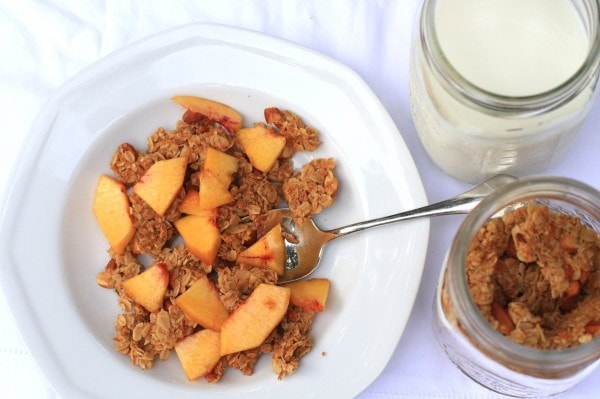
You probably won’t be able to DIY everything you eat, but if you pick one or two DIY projects that give you a lot of bang for your buck, you can save a lot without investing hours of time.
6. Get friendly with store brands.
Generic products have come a long, long way in the last 20 years, and many are really, really good. Give them a try, and you can easily shave your grocery budget down without spending any extra time (grabbing the store brand takes no longer than grabbing the name brand).
If you try a product and hate it, take advantage of the guarantee most store brands now offer and get your money back. No risk!
7. Plan a menu.
If you are floating along just fine without planning meals, carry on, sister! (or brother.)
But if you need help reducing your grocery budget, then try this. Make a meal plan, make a grocery list based on the plan, and THEN you can go shopping.
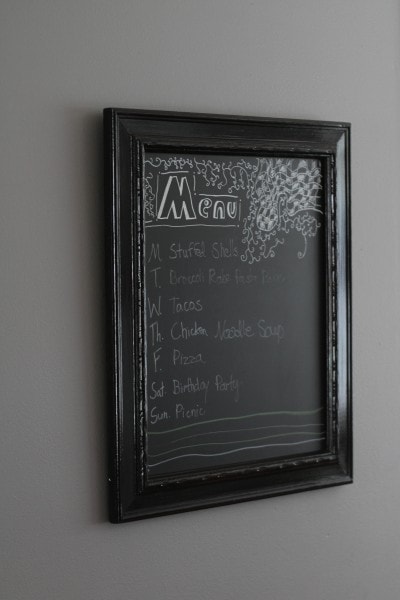
Knowing what you need means you are much more likely to only buy what you need.
Knowing is at least 75% of the battle.
8. Use your food; don’t waste it!
All of your smart grocery shopping is for naught if you end up throwing away what you buy. The cost of food waste for American households is staggeringly high. On average, we throw away about $1300 worth of food every year.
If you’d rather have $1300 instead of a bunch of rotten food, check out my ten best tips for reducing your food waste and get started this week.
9. Switch up where you shop.
My top store advice? If you have an Aldi in your area, GO THERE. They have great food at ridiculously low prices and you never have to clip coupons or watch sale ads to save oodles of money.

Related: Why I like Aldi better than Walmart, plus what I buy (and don’t buy) at Aldi
If you don’t have an Aldi: check for a salvage grocer in your area. Buy your toiletries at Target. Check Amazon’s Prime Pantry to see if it beats prices at regular stores. Check out other local grocery stores. Consider a Costco membership.
It may be that you’re already shopping at the store with rock-bottom prices, but it’s worth it to check around just to be sure.
10. Use sales wisely.
If you have an Aldi near you, you won’t be super dependent on sale cycles. However, if your main store is the type that runs sales, check the ad each week. Pay special attention to the front-page specials, because that’s where the lowest prices usually are.
Plan your menu around what you see on sale, and if you see a really great price on something that’s shelf stable or that you can freeze, buy extras and store/freeze for future use. Doing this regularly ensures that you always have sale-purchased items in stock at your house.
(Do make sure that you don’t buy more than you can use, though! A great price on food is for naught if you end up throwing it away.)
________________________
Obviously, there are way more than 10 strategies for reducing grocery spending, but these are the ones that are most helpful to me.
What would YOU add to my top ten? Share in the comments!

akbj
Monday 9th of May 2016
Great post Kristen, I live alone & I actually have a Costco membership, it works out to about $4.50 monthly & even if I only go once a month I save way more than that. Just on the bagged Strawberries & blueberries for my smoothies alone. They are about $10.00 a bag for 5 & 6 lbs. Also the good brands of bread are great to get & put in the freezer & I like their apples. Also chocolate chips in the large bags for cookies & real butter. Cheaper than my grocery store. I also get items like ibuprofen & Tums etc there. Other things occasionally but it does save me money. I live in Anchorage, Ak where things are a bit more expensive, especially fresh food. We don't have an Aldis or Trader Joes or anything like that. I don't have a vehicle so walk to a Safeway 2 blocks from where I live. I use a wheelie bag to haul stuff home in. I find if I go twice weekly (due to weight reasons of what I get) I can find clearances in their freezer clearance & frequently get half price juice etc. I also only get stuff on sale/clearance. I use the weekly flier & sometimes if I see a really good price on something I'll google for coupons on that item. I occasionally get 12 0z bags of Seattles Best coffee that is $5.00 on "$5.00 Friday" for $3.00 a bag using $2.00 coupons. Once I was able to get 4 bags for $3.00 a bag. I really like their "$5.00 Friday" deals, usually 1 or 2 things I can really use. I've gotten the very best oats for oatmeal on amazon, it's called "Bob's Red Mill" & the price is great & it tastes much better than the "regular rolled oats" from the grocery store. I make it in the microwave & add stuff. It's awesome. That brand also has the very best popping corn, I got a special microwave popcorn bowl on amazon, it's made in Barcelona, Spain, it doesn't need any special cardboard things like one bowl I tried years ago. It works so well, just use a tiny bit of real butter & it's much better & cheaper than the regular microwave popcorn. I'm also "mostly" vegetarian, grew up veggie & now I eat very occasional fish, chicken, turkey but very little. I really like the Morningstar Farms veggie foods but only on sale. They are really good but expensive. I stock up on Progresso Lentil soup when it's 4 for $5.00 or so. It's my favorite soup & I know lentils are easy & much cheaper to make from scratch but I do like microwave cooking. I have chronic pain, (fibromyalgia) so my energy for cooking flags sometimes. Really enjoyed reading all of the posts here, thank you for what you do.
DessertForTwo
Monday 9th of May 2016
I love this post! If I could add, shopping in the bulk bins. Oatmeal in the bulk bin is usually cheaper than the box.
Kaity
Saturday 23rd of January 2016
Kristen, thanks so much for taking the time to create such an inspiring blog. I've really enjoyed your posts this year! Great comments from everyone! Thank you. One thing that I learned to do many years ago was to shop ethnic markets for certain items. (I lived with an exchange student one year in college.) Our family loves to make Indian food, including homemade chapati and naan. We homeschool, too, so can build a little baking into our day. The Indian market near us sells bags of fresh spices and large inexpensive bags of high quality basmati rice. At Christmas, we love to give homemade gifts, so I purchase our cloves and cinnamon sticks in bulk there. They have wonderful prices on mangoes when in season, too, and you don't have to buy the whole box, like in Costco. Does anyone else shop ethnic markets? What are your best finds?
Ruth
Thursday 21st of January 2016
Have you ever done a price comparison of homemade granola versus store bought regular cereal? The price of almonds has gotten so high that I feel like the costs are getting awfully close to each other.
As a shoutout to Aldi, today I got milk for $1.49, bread and buns for a quarter (I've stopped making my own bread since I got pregnant and need to nap daily), and a ham for $2.25! I'm geeked about it. :)
Kristen
Thursday 21st of January 2016
Yay about the ham!
I've not compared granola to regular cereal, just granola to granola. I'm not sure it's completely fair to compare granola to cereal, given that most cereals don't have nutritious things like almonds in them, you know?
K D
Thursday 21st of January 2016
I selectively buy at SAM'S Club (I'd love to go to Costco instead but it is just far enough away that I wouldn't do it). Two pound bags of yeast are an amazing deal and the big containers of spices are as cheap as the small ones at the grocery store. If you have someone to split it with that's great.
I am so-so on Aldi. I mostly buy produce there (they have a great sale this week, if I'm able to get there pre or post blizzard).